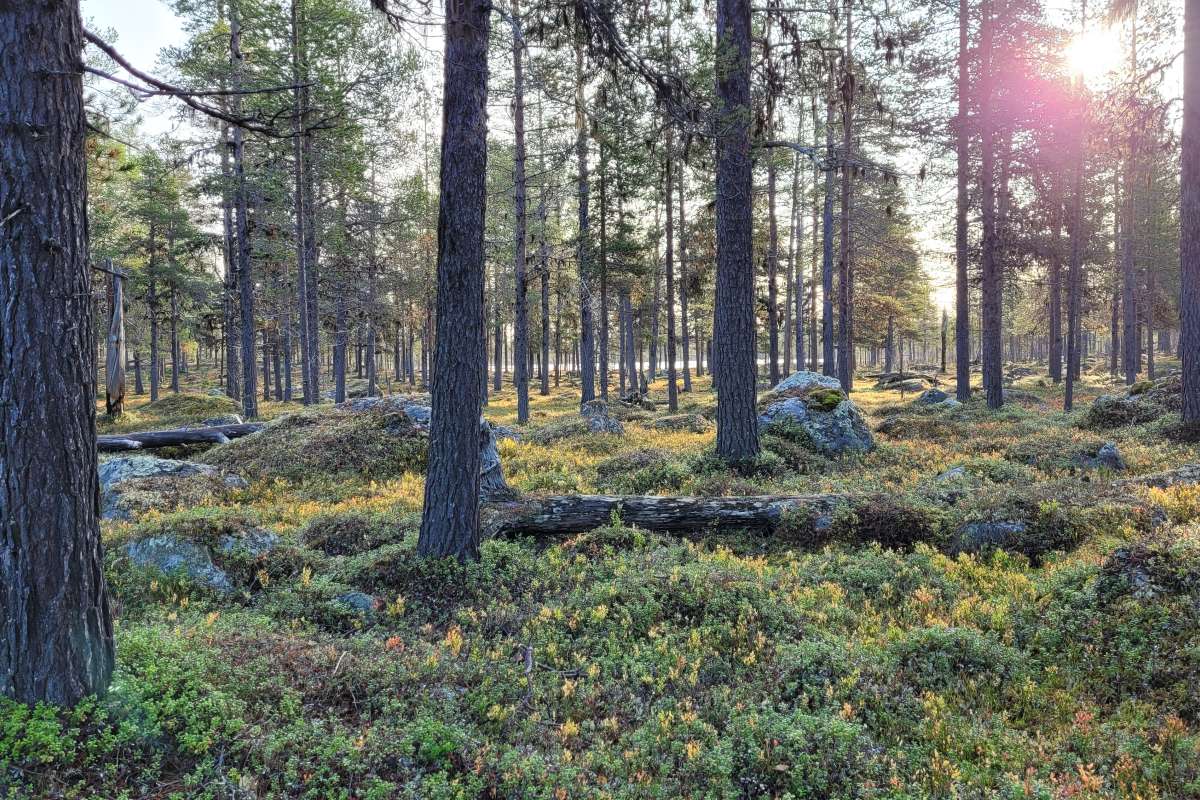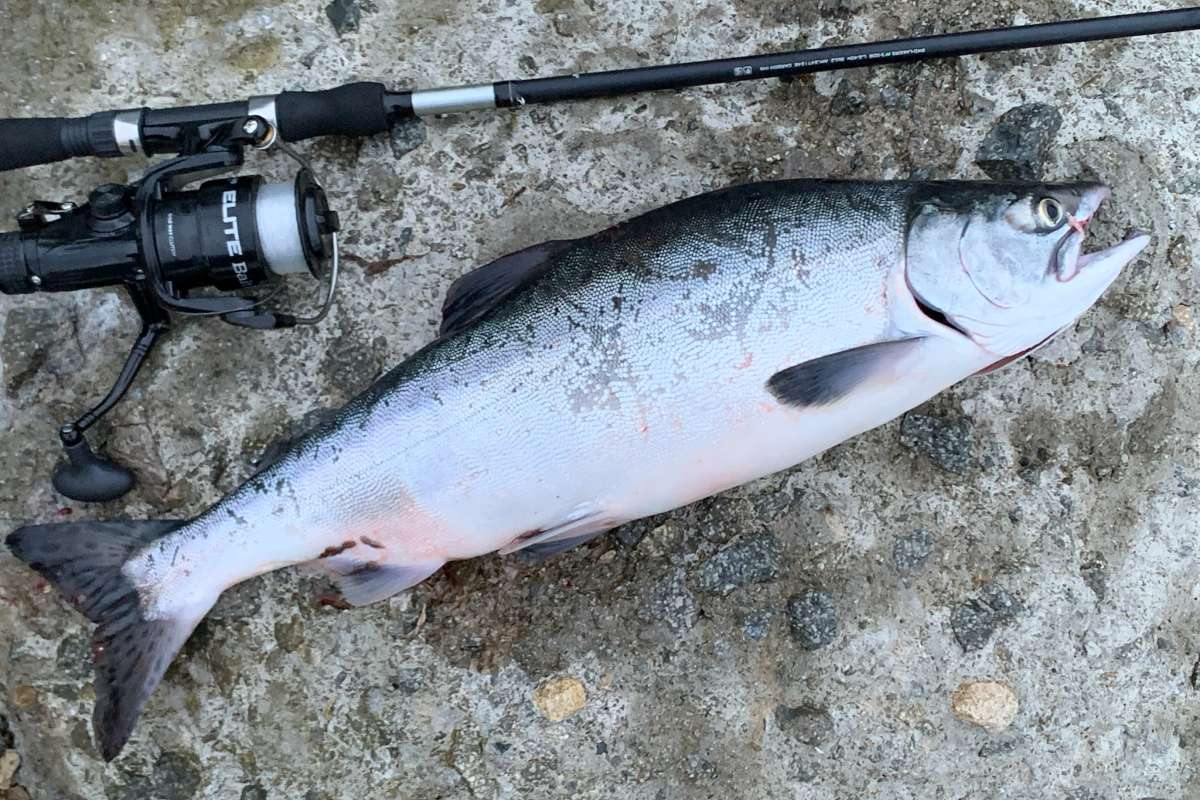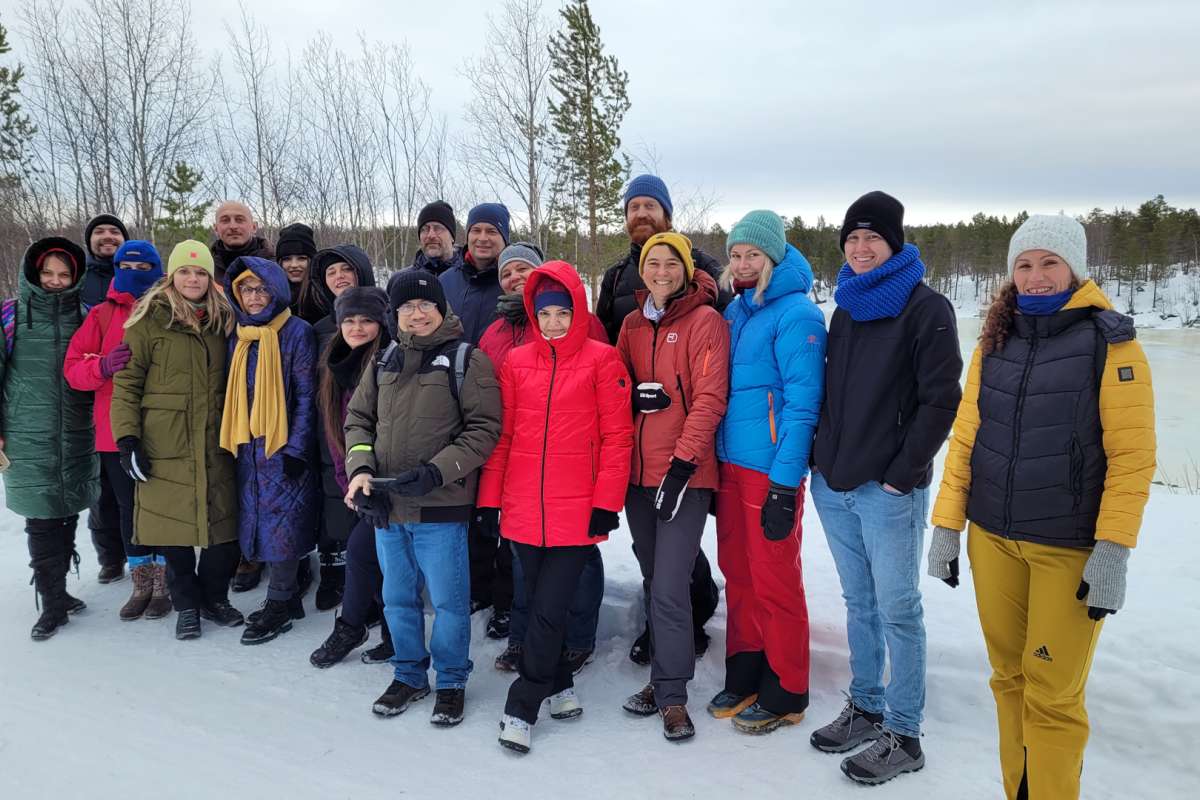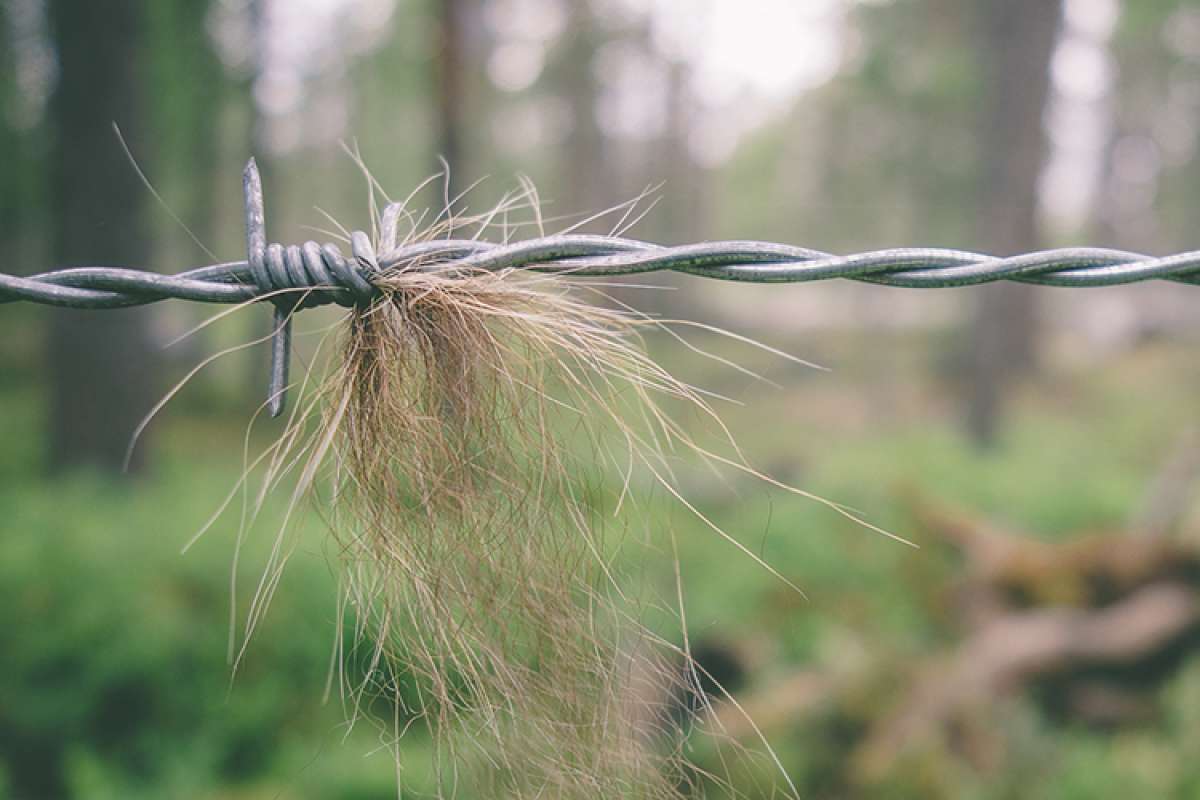Monitoring of brown bears in Pasvik and Inari using hair traps
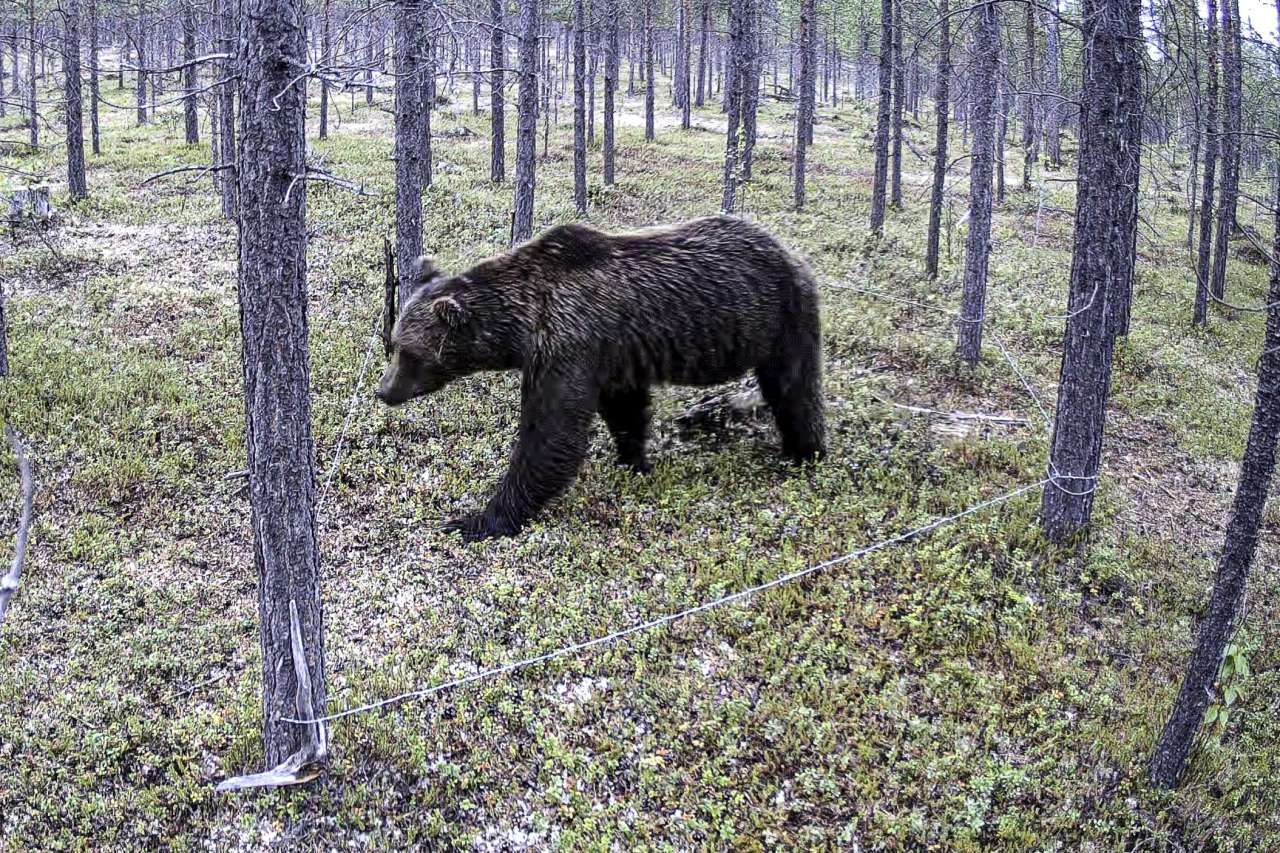
Male brown bear visiting a hair trap in the Pasvik valley, July 2023. Photo: Wildlife Camera / NIBIO
Since 2005, NIBIO Svanhovd has been monitoring the population of brown bears (Ursus arctos) in the border area between Norway, Finland, and Russia. In the summer of 2023, DNA from 22 bears was detected.
In the initial years, hair and faeces were randomly collected in the field, but since 2007, a more systematic collection of bear hair has been conducted using hair traps. The method involved deploying hair traps with scent attractants within a grid of 5 x 5 km2 squares in Norway, Finland, and Russia. The total study area covered approximately 1400 km2.
Reduced study area in 2023
After initiating systematic hair trap surveys in the Pasvik-Enare Trilateral Park, the method has been repeated every four years – in 2011, 2015, 2019, and 2023.
"Due to the geopolitical situation, samples were not collected from Russia in 2023," says laboratory manager Ida Marie Bardalen Fløystad at NIBIO Svanhovd.
"Last year's study was conducted within an area of 1075 km2 in Pasvik (Norway) and Inari (Finland). A total of 43 traps were set up, compared to the previous 56. Otherwise, the method remained the same as in previous studies."
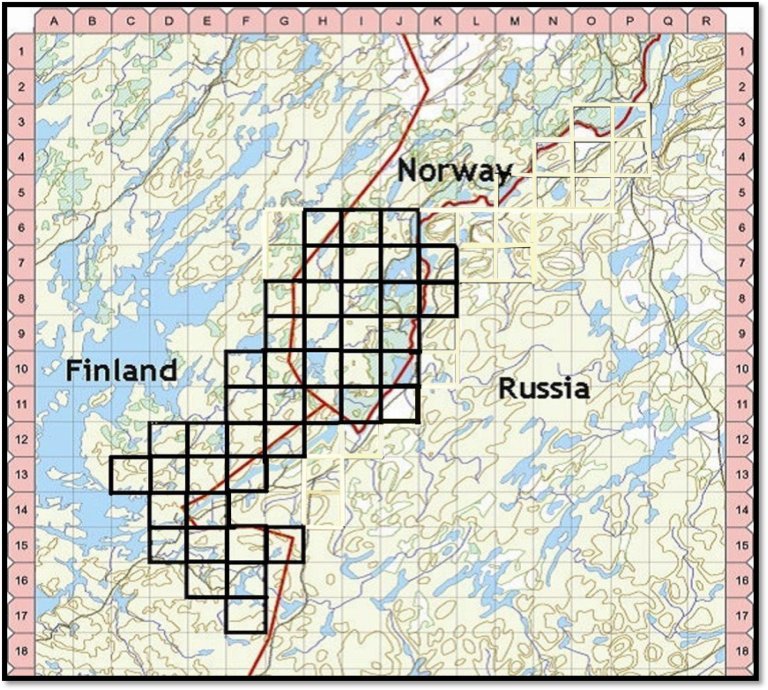
22 bears detected in 2023
"In the 2023 season, a total of 97 samples were collected," says Fløystad.
"Seventy-one of the hair samples turned out to be from bears, and a complete DNA profile could be determined for 63 of the positive samples. In total, 22 different bears were detected (10 females and 12 males). Of these 22, 12 individuals were previously detected in earlier years, while 10 were unknown bears not detected in previous surveys. In this survey, 13 bears were detected in Finland and 11 in Norway. Comparable figures from 2019 were 20 bears detected in Finland and 14 bears detected in Norway."
Fløystad emphasizes that the results are not immediately comparable to those from previous years because the study area is not the same:
"The number of detected bears was 53% lower in 2023 than in 2019, while the study area was only 26% smaller. We can assume that this is due to lower bear activity in the monitored area or less overlap in time and space between the distribution of bears and the placement of hair traps."
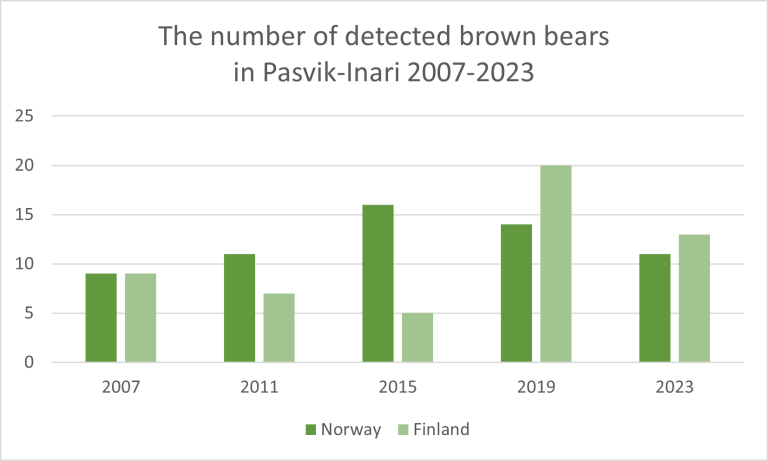
Second-highest success rate in 2023
This year's sampling had the second-highest success rate in terms of the number of bear individuals per sample square: 0.51 individuals per square, compared to 0.81 individuals in 2019 (the highest success rate), 0.49 individuals in 2015, 0.35 individuals in 2011, and 0.42 individuals in 2009.
"Our results show that even with a smaller study area (fewer squares), the hair trap project provides valuable information about the bears in the area. Therefore, the survey is an important supplement to the national monitoring program for brown bears in Norway, which is based on random collection of faeces and hair."
Contacts

HAIR TRAPS
The hair traps are made of barbed wire stretched tightly between four or more trees, approximately 40 cm above the ground, creating a square area of about 5 x 5 m (25-30m2). The idea is that bears will leave hair on the barbed wire as they crawl under or over it to investigate the fantastic 'perfume' placed in the middle.
In the center of the fenced area (the hair trap), a small mound of peat, moss, twigs, branches, and roots is created. The mound is covered with a strongly scented lure made of fermented fish waste mixed with oxygenated blood from cattle. These two components are allowed to develop for several months before being strained into a thin liquid and mixed. The mixture is used only as a scent lure, not as bait.
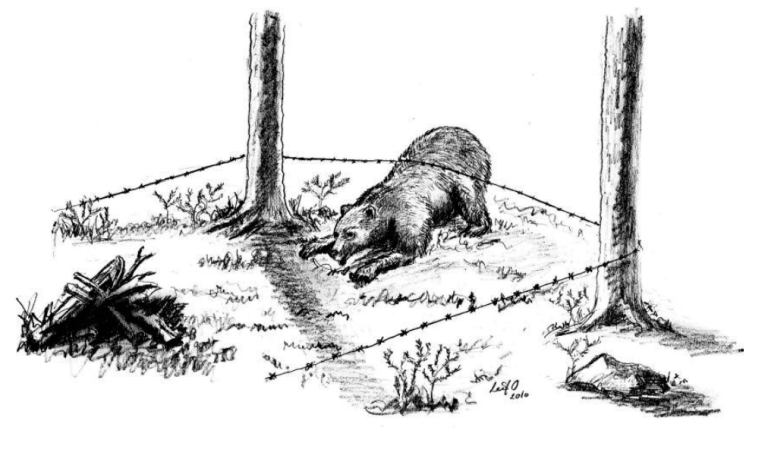
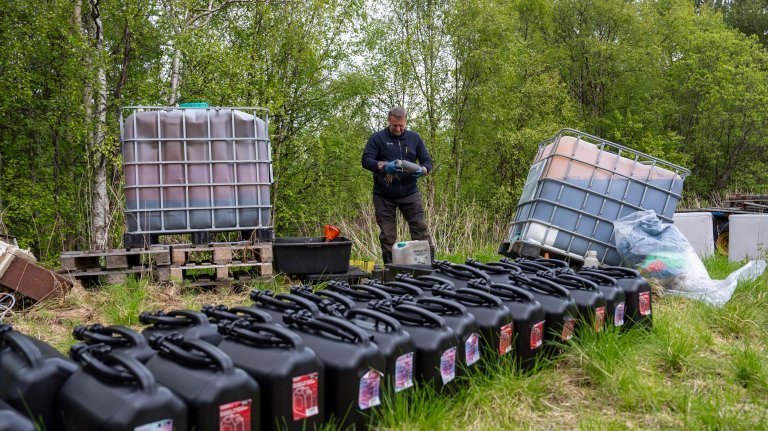
Contacts

Publications
Authors
David Kniha Paul Eric Aspholm Ida Marie Bardalen Fløystad Ane-Sofie Bednarczyk Hansen Ingrid Helle Søvik Sari Magga Rolf Randa Lisbet H. Baklid Tuomo Ollila Snorre Hagen Hans Geir EikenAbstract
Since 2005, the population of the trans-border brown bear (Ursus arctos) in Trilateral Park Pasvik-Inari (Norway-Finland-Russia) has been monitored by using genetic analyses of hair and faeces collected randomly in the field. A more systematic method using hair traps every fourth year was initiated in 2007 to collect brown bear hairs for genetic analysis. The method consisted of 56 hair traps in Norway, Finland and Russia in a 5 x 5 km2 grid cell system (ca 1400 km2). The project was repeated in 2011, 2015, 2019 and now in 2023. This season’s sampling was carried out in Pasvik (Norway) - Inari (Finland) area (43 squares, 1075 km2), using the same methodology as in the previous studies. A total of 97 samples were collected, where 45 samples came from Finland and 52 samples from Norway. In the bear specific analysis, 71 (73 %) of the 97 hair samples were positive. A complete DNA profile could be determined for 63 of the positive samples. In total, 22 different bear individuals were detected (10 females and 12 males). Of these 22 bears, 12 bears were detected in previous years, while 10 were previously unknown bears. In total, 13 bears were detected in Finland and 11 bears in Norway. This year’s sampling has the 2nd highest success rate in number of individuals detected per grid square, with 0,51 individual per grid square compared to 0,81 individuals in 2019 (highest success rate), 0,49 in 2015, 0,35 in 2011 and 0,42 in 2009. Our results showed that even with a smaller study area, the hair trap project every 4th year provides valuable information on the brown bear individuals in addition to a random sampling in the field (The National Monitoring Program for brown bears in Norway).
Authors
Benedicte Lissner Beddari Sergey Ogurtsov Sari Magga Jaru Kangasniemi Ida Marie Bardalen Fløystad Inger Søvik Tom Sotkajærvi Rolf Randa Leif E. Ollila Vetle Lindgren Beate Banken Bakke Vilde Rushfeldt Beddari Natalia Polikarpova Tuomo Ollila Snorre Hagen Hans Geir EikenAbstract
Siden 2005 har populasjonen av grenseoverskridene brunbjørn (Ursus arctos) i Trilateral Park Pasvik-Inari-Pechenga (Norge-Finland-Russland) blitt overvåket ved å bruke genetiske analyser av hår og ekskrement-prøver samlet inn opportunistisk i felt. En mer systematiske metode med hårfeller hvert fjerde år ble i 2007 startet opp for å samle inn bjørnehår til genetisk analyse. Metoden består i å sette ut 56 hårfeller med luktstoff i Norge, Finland og Russland i et 5 x 5 km2 rutenett (totalt ca. 1400 km2). Dette prosjektet ble gjentatt i 2011, 2015 og nå i sesongen 2019 med 58 ruter og ved bruk av samme metode som i 2007. I 2019 sesongen ble det samlet inn 182 prøver, der 66 av disse var fra Finland, 59 fra Norge og 57 fra Russland. For 144 (79,1 %) av de 182 hårprøvene var det positivt resultat i den bjørne-spesifikke analysen, og en komplett DNA profil kunne bestemmes for 136 av de positive prøvene. Det ble totalt påvist 47 forskjellige bjørner (25 hunner og 22 hanner). Av disse 47 individene var 24 påvist i tidligere år, mens 23 var til nå ukjente bjørner. Totalt ble det påvist 20 bjørner i Finland, 14 bjørner i Norge og 16 bjørner i Russland...
Authors
Siv Aarnes Alexander Kopatz Hans Geir Eiken Julia Schregel Paul Eric Aspholm Tuomo Ollila Olga Makarova Natalia Polikarpova Vladimir Chizhov Sergey Ogurtcov Snorre HagenAbstract
The trans-border brown bear population of Pasvik-Inari-Pechenga (Norway-Finland-Russia) has been monitored using genetic analyses of feces collection since 2005. In addition, in 2007 and 2011, hair traps were systematically placed out in the area to collect hairs for genetic analysis, to more precisely determine the minimum numbers of bears in the area. In 2015, we repeated this hair trap study, using the exact same methodology as in 2007 and 2011, to make a direct comparison of the results from all the 3 study years. Brown bear DNA was detected in 158 of 209 hair samples (76%) obtained from hair traps in 2015 and for 136 of these samples, a complete DNA profile could be determined. We identified 26 different bears in 2015, 17 females and 9 males. We detected 16 bears in Norway, 5 bears in Finland and 9 bears in Russia. Thirteen of these 26 bears were previously unknown, 7 were detected in Norway, 2 in Finland and 4 in Russia. A comparison to the results from 2007 and 2011 showed that we detected more bears in hair traps in 2015 (26 bears) than in 2007 (24 bears) and 2011 (20 bears). We observed an increase in the total yield of hair samples in the traps in 2015 (209 samples) compared to 2007 (196 samples) and 2011 (88 samples). Four (16%) and seven (35%) of the bears caught in hair traps in 2007 and in 2011, respectively, were also recaptured in 2015. Additional samples (scats and hair) collected opportunistically in the field within the Russian and Finnish parts of the study area in 2015 detected 4 male bears and 1 female bear in the Russian part leading to a total of 14 bears identified in Russia, of which 8 bears were detected for the first time. Additional scat and hair samples from the field in Norway were not included in our study and comparisons between the systematic hair-trapping and opportunistic sampling in the field were not performed. However, the results indicate that both methods combined are currently the optimal approach to monitor brown bear numbers in an area.
Authors
Siv Grete Bjervamoen Martin E. Smith Leif E. Ollila Hans Geir Eiken Paul Eric Aspholm Alexander Kopatz Aspi Jouni Tanja Kyykkä Tuomo Ollila Pekka Sulkava Olga Makarova Natalia Polikarpova Ilpo KojolaAbstract
No abstract has been registered

